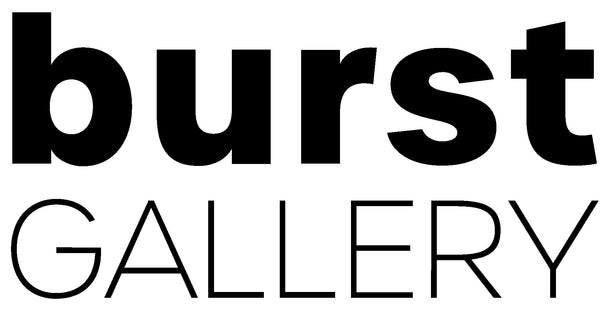How the Music Industry Is Adapting Post-Covid
As COVID-19 continues to impact our lives, so too does its effect on the arts. One of the heaviest casualties has been the music industry, with live-gig fans finding themselves unable to attend concerts and experiencing delays in new music. But is the fat lady singing on live performances, or do the artists and bands we know, love, and miss, have a plan up their rock ‘n’ roll sleeves? Here at Burst Gallery, we look at how the music industry is adapting to the post-COVID world.
Music Streaming
With CDs left in the dust in favour of streaming services, digital sales of singles and albums now account for around 80% of the total music industry revenue. For more prominent and established bands at major labels, this doesn’t mean too much – most of their fans have been able to download or stream new releases during lockdown without a problem. The global pandemic has proved a major obstacle for up-and-coming bands and those looking for a break and a music career.
However, a 21st Century version of the grass-roots method of promoting bands might provide the safety net that the new kids on the block are looking for. Sites such as Bandcamp, Pandora and Jamendo provide digital platforms that give audiences access to artists that may not otherwise get the airing they both deserve and need. If you want to add some new blood to your music collection, they’re well worth checking out.
Although music streaming may not have the same exhilarating thrill that you get from the best festival experiences, the ability to listen to your favourite bands once more, interact with them and support their work has given rise to totally new business models. The music business has seen many changes over the years, but none quite so drastic nor as encapsulating as the post-pandemic generation.
Gigs Have Changed
With social distancing a priority in the fight against coronavirus, swathes of gig-goers were left frustrated and disappointed at cancelled concerts and postponed events. The travel restrictions provided a further problem, completely quashing the idea of international tours and festivals.
At a basic level, local artists were able to play in parks and at bandstands, to crowds of people who had the option to keep their distance from other music lovers. However, for those who want the thrills and spills of a huge, people-peppered concert, this might not have been enough.
Even though the appetite to attend packed concert halls may not be what it once was, or at least not until even more of the population has been fully vaccinated. Smaller, more local tours have once again started to take place. Larger international tours are scheduled for the end of 2021 and the beginning of 2022, as the music industry looks to recover and artists attempt to get their music careers back on track.
As the COVID-19 vaccine rollout continues to prove a success, it looks as though it could also determine the future of live music events. The UK government is making vaccine passports compulsory for entry into large venues and nightclubs. Therefore, as long as you are fully vaccinated against COVID-19, you may be able to safely enjoy that thrill of a live performance sooner rather than later.
As far as seeing your favourite act goes, there may be an upside to the coin. With the virus still hampering travel and covid anxiety holding back many, music industry experts anticipate more established acts dispensing with the belts and braces and stripping back. This means that, instead of seeing U2 or The Rolling Stones backed by sprawling horn sections or enormous orchestras, you’ll get your band on stage, playing just as you first heard them. (Music Week).
Get to Know Your Favourite Artists

Coldplay at Etihad Stadium in Australia 2012. Click on the image to find out more and buy this print.
As the net tightened on gigs, bands have had to find other ways to engage with their fans. The odd promotional email, merchandise missive or video release wasn’t going to cut the mustard.
As streaming continues to reach our doorsteps, the probability is that bands are likely to use digital platforms, more and more, to give their fans a chance to interact with them. Live streaming has offered music diehards the opportunity to see specially-arranged concerts and even indulge in that rarity: the Q&A.
Over the last few months, artists such as Coldplay, John Legend and Taylor Swift have collaborated on “Together at Home” gigs, which give their followers a chance to hear their classics and new releases and offer a sneak-peak inside their homes. The likes of YouTube and Twitch are the favoured platforms.
While live-streaming will never replace the entire “I was there” feeling of a live event, it does compensate with the sense that your favourite band is playing for you and you alone.
Music Festivals for the Few?
The good news for festival fans is that festivals don’t want to shut up shop. Festivals are where promoters, bookers, stage crew, festival staff, and bands make a sizable amount of money. In number terms, the UK festival scene is worth around £4billion to the UK’s economy. However, you can’t fight a virus with figures.
We have already seen festivals go ahead but on a much smaller scale. With social distancing rules governing how to interact, you were less likely to find yourself rubbing shoulders with the metalhead next door while trying to watch Airbourne in full flow. Instead, festivals were forced to scale themselves down to cater for this new kind of gig.

Airbourne – Joel O’Keefe at Download Festival 2019. Click on the image to find out more and buy this print.
With two summers disrupted by restrictions and rising infection rates, the immediate future for festivals looks uncertain. What we know, however, is that there’s a lot of cash at stake. As long as we continue to make progress in our fight against COVID-19, festivals will return next summer in some form or other.
The concern for fans is that if audience numbers are forced down, ticket prices are likely to be forced up. While there might be some truth in this, there’s also the question of credibility. Just as consumers have been keeping an eye on high street stores to see which ones have treated their staff well during the pandemic, live music fans are likely to be watching to see which ones keep them in mind. Just as there are VIP packages available for gigs, the chances are that there will be fan-friendly tickets available to those who can’t afford to see a band against a festival backdrop.
Without a doubt, coronavirus has presented the biggest challenge to live music in living memory. However, it may also have shone a much-needed light on its flaws which we’ve been living with for so long. For fans, it’s the likes of inflated ticket prices for festivals and gigs and the eternal problem of touts. For artists, the unfair balance between airtime for “heritage acts” and new kids on the block is cutting off emerging music at its roots.
The only thing that’s guaranteed is that things have changed and will have to change further. While there is still a demand for live concerts, the music industry will have to factor in the needs and wants of music fans, which could, ultimately, work in their favour.
Celebrate your love for all things music and pay homage to your favourite artists with one of Burst Gallery’s prints. Order now and get free UK delivery.


